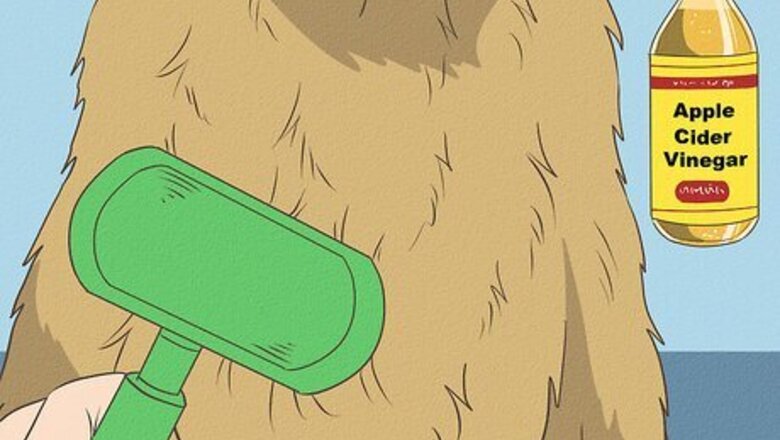
views
Washing Your Dog with Apple Cider Vinegar

Make a rinse to improve your dog's skin and coat. After bathing your dog, brush the vinegar through the dog's coat. It will improve the shine of your dog’s coat and will act as a deodorant. Do not use if your dog’s skin is dry, broken, or otherwise irritated. Treating your dog's skin this way will help prevent dry skin and itchiness.
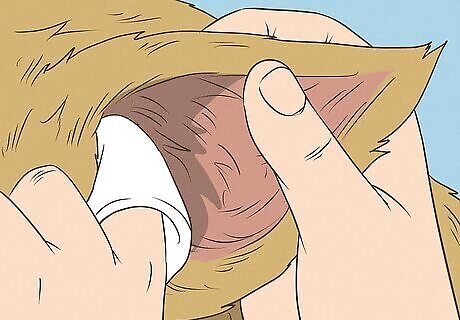
Clean out your dog's ears using ACV. The antibacterial properties of apple cider vinegar make it an option to clean out a dog's ears. It will help to prevent infection and ward off parasites that are susceptible to the acid in ACV. Soak a small cotton ball or piece of clean cloth in the vinegar and gently wipe your dog's ears as carefully as you can. Be aware that ACV's astringent properties may sting your dog's ears or cause the delicate skin of the ear canal to dry out.
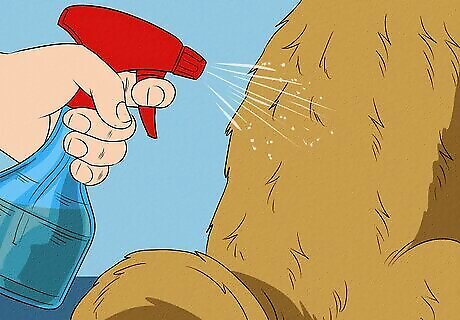
Spray your dog's coat to repel fleas. If your dog spends a lot of time romping around during the summer, using ACV may keep fleas away. Mix two cups of water and two cups of ACV in a clean spray bottle. Once a week, spray your dog's fur with the mixture. Although not scientifically proven to get rid of flea, the acidic taste of the vinegar may repel fleas and other parasites. If your dog dislikes being sprayed, dip a washcloth into the mixture and rub your dog's coat. There is no need to rinse your dog afterward. The smell will dissipate after the ACV dries.
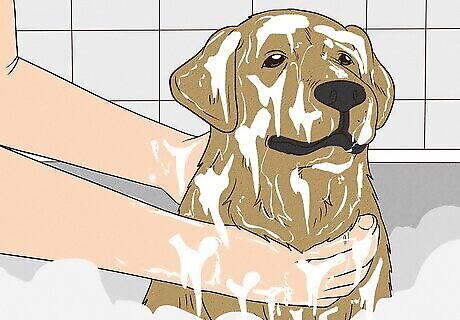
Bathe in ACV-soap mixture to fight fleas. If your dog has a case of fleas, you can drown them by using a mixture of soapy water and ACV. The soapy water washes the fleas away and the ACV is anecdotally reported to keep them from coming back. Make a mixture of 1/4 cup dish soap, ⁄2 gallon (1.9 L) water and 1/2 gallon ACV. Put on long sleeves and gloves. Before you start treating your dog, it's important to protect your own skin from flea bites. Work outside if you're dealing with live fleas and ticks. Bathe your dog in the solution. Avoid getting the solution in its eyes. Cover every part of its fur and use your fingers to work the solution all the way to the skin. You want to work up a good lather to help kill the fleas. Let the solution sit on your dog for ten minutes. If it's a particularly bad infestation, have a second batch of the solution handy so you can do a double flea treatment.

Use a flea comb to remove the fleas. Carefully comb through the fur section by section to remove live fleas and their eggs. Dip the flea comb into a bowl of soapy water, which will drown the fleas on impact. The fleas should come off of your dog easily, since they'll be repelled by the taste of the ACV.

Rinse your dog. When you're finished rinse to remove all traces of soap and dead fleas. Follow up by spraying its coat with a fifty-fifty ACV and water solution. Then let it completely air dry.
Treating Your Dog with Apple Cider Vinegar
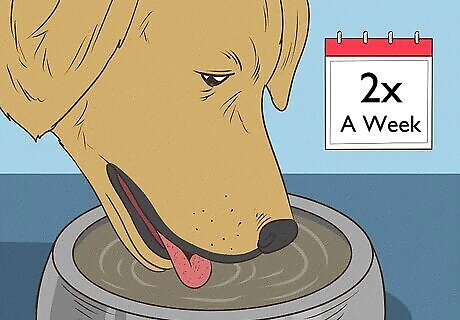
Improve your dog's general health by using ACV twice a week. Feeding your dog ACV this often will help to keep its skin and fur healthy as well as keeping fleas at bay. To feed your dog ACV, just add a teaspoon to its water dish twice a week. Keep in mind that apple cider vinegar's effects will vary from dog to dog. There is no scientific evidence to suggest that it improves the health of every dog. Some effects may be the result of the placebo effect.
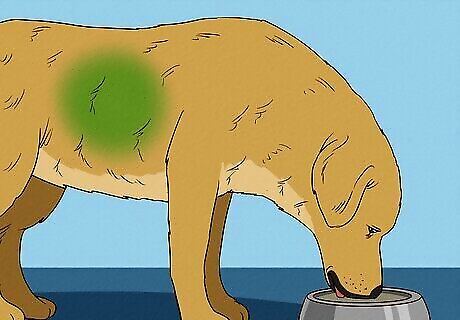
Treat your dog's digestive problems. If your dog has digestive problems such as constipation or diarrhea, try using ACV once a day. Add a teaspoon to a large bowl of water daily. This will help improve diarrhea episodes and can fix constipation in a dog with repeated use. A large dog can handle twice a day treatments. If your dog is over fifty pounds, use two teaspoons per day. If your dog's symptoms don't improve after a week, you should take it to the vet to see if a stronger medication is required.
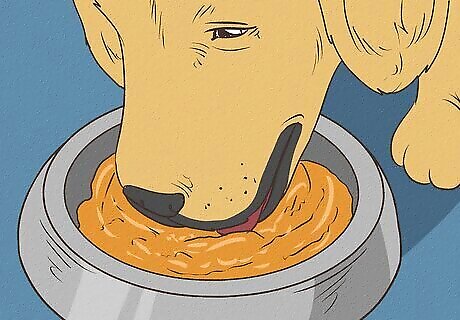
Make an ACV mixture that your dog enjoys. If your dog seems to hate the taste or smell, it's best not to force it to eat it. Mix it in with its food instead. Or create a special ACV treat by mixing it with a teaspoon of peanut butter.
Educating Yourself About Apple Cider Vinegar
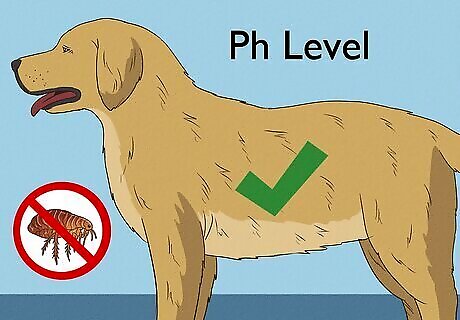
Know the benefits of ACV. ACV has antibacterial properties that are beneficial to dogs' skin, ears, and digestive systems. It also alters dogs' internal pH level. Regularly feeding your dog ACV helps to promote good health, both inside and outside. Keeping a good pH level is important. Pests like fleas, ticks, bacteria, parasites, ringworm, fungi, staphylococcus, streptococcus, pneumococcus, and mange are less likely to bother dogs with slightly more acidic urine and an acidic skin/fur coat outer layer. Apple cider vinegar can promote these qualities. Opponents of ACV use argue that there is no proven scientific data that shows that ACV effectively repels fleas. They argue that any benefits derived from bathing in ACV are likely to be a result of regular flea combing and treating the environment, rather than the ACV directly.
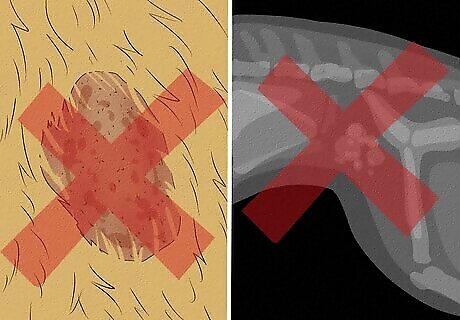
Know the risks associated with ACV. It can sting when applied to broken skin or sores. Don’t use on broken skin. If you are planning on using ACV to fend off fleas, then be aware that if the fleas have irritated your dog’s skin enough, it will probably burn. Bladder stones can form after prolonged ACV use. ACV is acidic and raises the level of acid in your dog's urine. Highly acidic urine in dogs leads to oxalate bladder stones. This is because oxalate crystals precipitate out of ACV solution. Potentially, the bladder stone could block the urethra (the tube through which the dog urinates), limiting your dog's ability to urinate. This is an emergency situation, which will require surgery to remedy. It is certainly NOT advisable to give ACV to any animal with a history of bladder stones of the oxalate variety. In theory, you could monitor the dog's urinary pH using dipsticks. The ideal pH should be around 6.2 - 6.4, so if the dipstick indicates a pH more acidic than this (below 6.2) then it would be best to discontinue using ACV until the pH recovered.
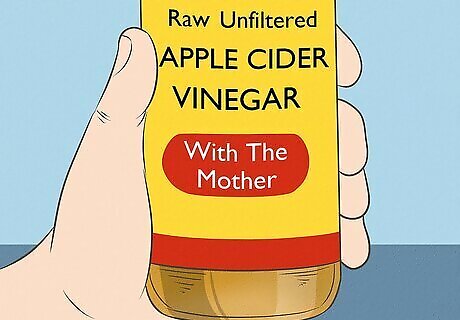
Choose the best ACV. There are manufactured forms of apple cider vinegar and organic versions. Choose the latter. The best apple cider vinegar to use is fermented and unfiltered, also referred to as "raw." Raw ACV contains a cloudy substance called "the mother," which contains healthy enzymes and minerals.














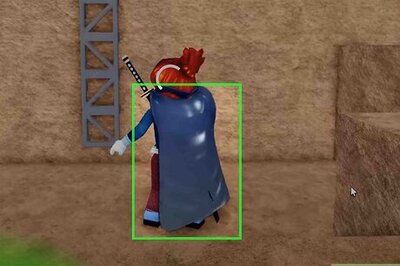



Comments
0 comment